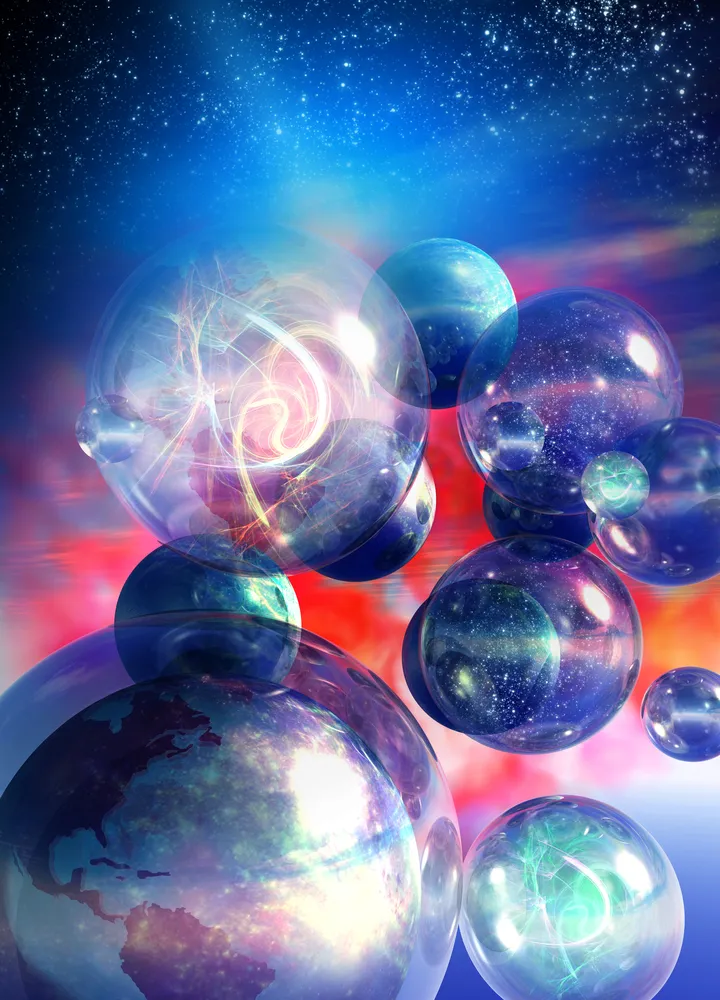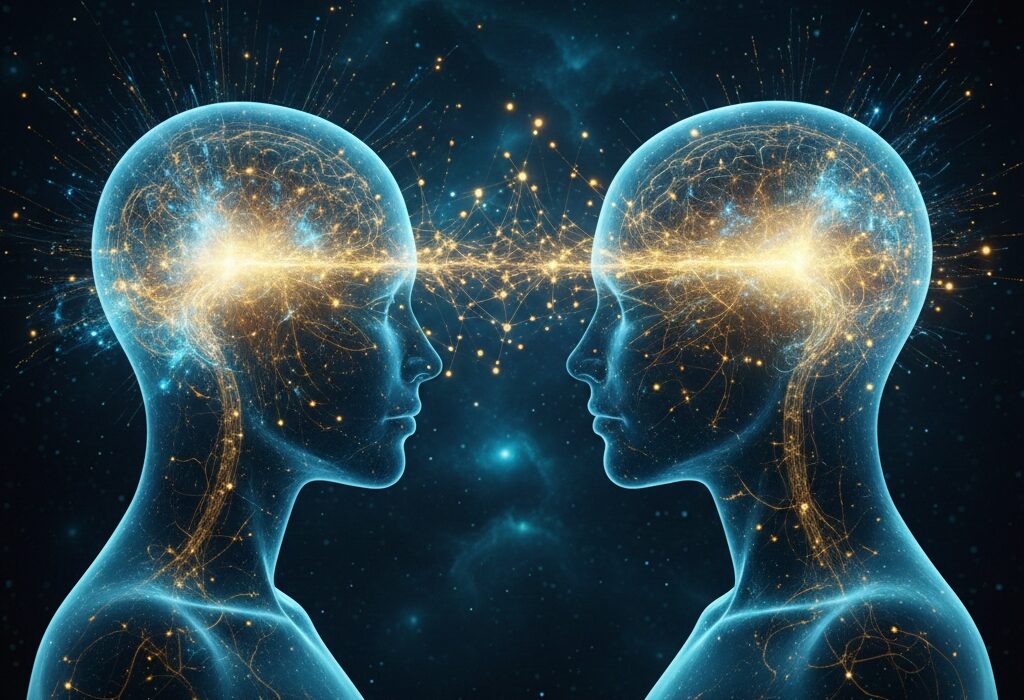Since the dawn of human imagination, we have wondered if our reality is the only one that exists. Ancient myths spoke of layered heavens, shadow realms, and parallel worlds hidden just beyond reach. Philosophers debated whether infinite variations of existence might coexist, each with its own truths. And in the modern age, science has taken up the question with renewed rigor: could there be more than one universe? Could our cosmos be but a single bubble in a vast ocean of universes—the multiverse?
The idea of the multiverse is not just a scientific speculation; it is a story that captures the deepest longings and fears of humanity. We yearn to know if we are unique, if our lives are singular, or if infinite versions of ourselves walk through infinite possibilities. We imagine worlds where we made different choices, where history unfolded differently, where physics itself plays by different rules. To ask about the multiverse is to ask about the limits of reality itself.
From Myth to Modern Science
Though modern cosmology grounds the multiverse in mathematics and physics, the roots of the concept stretch deep into history. Hindu cosmology imagined endless cycles of creation and destruction, with countless universes born and dying across eternity. Buddhist texts spoke of infinite world-systems, each inhabited by beings searching for enlightenment. Ancient Greek atomists like Democritus speculated that innumerable worlds must exist, born from the collisions of atoms in the void.
For centuries, these ideas remained the realm of philosophy and religion. Science, with its growing emphasis on observation, seemed to banish such speculation. Yet as astronomy advanced, our cosmic perspective expanded. The Copernican revolution dethroned Earth from the center of creation. The discovery of galaxies revealed that even our Milky Way is but one among billions. At every stage, the universe has grown larger and stranger than we once dared to believe. The leap from many galaxies to many universes may be vast, but it is the next natural step in this progression of wonder.
The Universe We Know
Before we can explore the possibility of multiple universes, we must first ask: what exactly is a universe? In the simplest sense, the universe is everything we can observe—all of space, time, matter, and energy, governed by the laws of physics. It contains galaxies, stars, planets, and us. Yet our observational reach is limited by the speed of light and the finite age of the cosmos. The observable universe is a sphere about 93 billion light-years across, but what lies beyond its horizon is uncertain.
Modern cosmology tells us that our universe began around 13.8 billion years ago with the Big Bang, an unimaginably hot and dense state that expanded and cooled into the cosmos we see today. The Big Bang gave rise to space-time itself, as well as the fundamental particles and forces that structure reality. But why did it happen at all? Why does the universe have the properties it does? These questions lie at the heart of multiverse theories.
The Inflationary Multiverse
One of the most compelling scientific pathways to the multiverse arises from inflationary cosmology. In the early 1980s, physicists such as Alan Guth and Andrei Linde proposed that in the earliest fraction of a second after the Big Bang, the universe underwent an exponential expansion called cosmic inflation. This idea explained several puzzles, such as the remarkable uniformity of the cosmic microwave background and the large-scale structure of the cosmos.
But inflation has profound consequences. According to many models, inflation does not stop everywhere at once. Instead, it continues in some regions, while other regions “bubble out” into universes like ours. This process, known as eternal inflation, would create an infinite fractal of bubble universes, each potentially with different physical constants, particle properties, or even dimensions. Our universe, in this view, is just one bubble among countless others in an ever-expanding foam.
If inflation is correct, then the multiverse may not just be possible but inevitable. Yet direct evidence remains elusive, hidden behind the cosmic horizon. Still, the theory elegantly links the birth of universes to the very physics that gave rise to our own.
The Quantum Multiverse
Quantum mechanics, the strange and counterintuitive theory that governs the microscopic world, offers another doorway to the multiverse. In the 1950s, physicist Hugh Everett proposed the “many-worlds interpretation.” In quantum mechanics, particles exist in superpositions of states until measured, collapsing into a definite outcome. Everett asked: what if the collapse never happens? What if all outcomes occur, each in a different branch of reality?
In this interpretation, every quantum event splits the universe into multiple versions. When you flip a coin, one universe sees heads, another sees tails. When an atom decays, one branch contains the decay, another does not. The multiverse here is not spatial but branching, an ever-expanding tree of possibilities where every choice and chance event generates a new reality.
This idea is deeply unsettling and deeply alluring. It suggests that there are countless versions of you reading these words—some who stopped halfway, some who never opened this page, some who are living entirely different lives because of decisions made long ago. The quantum multiverse collapses the boundary between physics and philosophy, challenging our notions of identity and free will.
The String Theory Landscape
Another path to the multiverse comes from string theory, the ambitious attempt to unify all fundamental forces into a single framework. String theory proposes that the building blocks of reality are not particles but tiny vibrating strings, existing in a space of up to ten or eleven dimensions. These extra dimensions are compactified—curled up in ways that determine the laws of physics we observe.
The problem, or perhaps the wonder, is that string theory allows for an enormous number of possible compactifications—on the order of 10^500 different solutions. Each corresponds to a universe with its own laws, constants, and particles. This “landscape” of possibilities suggests that our universe is just one point in a vast multiverse. The values of our physical constants, such as the strength of gravity or the mass of the electron, may not be unique necessities but accidents of where we happen to live in this landscape.
This perspective introduces the anthropic principle: the idea that we observe this particular universe because it allows life to exist. Out of the countless universes in the multiverse, only a small fraction would have conditions suitable for stars, planets, and conscious observers. We exist in one of them, not by cosmic design, but because only here could beings like us ask the question.
Parallel Worlds and Brane Cosmology
Beyond inflation, quantum mechanics, and string theory lies yet another vision: that our universe may be a membrane—or “brane”—floating in a higher-dimensional space. This concept arises from certain string-theory models in which multiple branes coexist, each hosting its own universe. These branes might collide or interact, producing phenomena such as new Big Bangs.
In this scenario, parallel universes may not be infinitely distant but only a small dimension away, hidden from us because we are trapped on our own brane. Gravity, unlike other forces, might leak between branes, offering potential experimental hints. The image is both haunting and thrilling: universes stacked alongside ours, invisible yet profoundly close, like unseen rooms in a cosmic mansion.
The Puzzle of Fine-Tuning
One of the strongest motivations for the multiverse lies in the question of fine-tuning. Our universe’s laws seem exquisitely adjusted to allow for the existence of stars, chemistry, and life. If the cosmological constant were slightly larger, the universe would expand too quickly for galaxies to form. If the strong nuclear force were slightly weaker, atoms heavier than hydrogen could not exist.
Why should the laws of nature be so finely balanced? One answer is that there is only one universe, and its laws are necessarily as they are. But another possibility is that there are countless universes with different laws, and we simply find ourselves in one of the rare ones where life is possible. This explanation, though controversial, transforms fine-tuning from a mystery into a selection effect, a natural outcome of the multiverse.
Can the Multiverse Be Tested?
A crucial challenge to multiverse theories is testability. Science demands evidence, predictions that can be confirmed or falsified. But if other universes are causally disconnected from ours, how could we ever observe them? This is the deepest criticism of the multiverse—that it strays from science into metaphysics.
Yet some avenues may offer hope. Certain models predict that collisions between bubble universes could leave imprints in the cosmic microwave background. Others suggest that quantum fluctuations might carry subtle signatures of multiverse physics. Even the statistical distribution of physical constants might provide indirect evidence. While definitive proof remains elusive, the search continues, fueled by both curiosity and the possibility that our universe may not be the whole story.
Philosophical and Emotional Implications
Beyond physics, the multiverse reshapes our sense of meaning. If infinite universes exist, what does that say about our uniqueness? Are we just one of countless versions, our choices replicated endlessly? Or does the very vastness of possibility enhance the preciousness of this particular existence, this specific thread in the tapestry?
For some, the multiverse offers comfort: a universe where lost loved ones still live, where tragedies were avoided, where dreams came true. For others, it brings unease: if everything happens somewhere, what is the value of morality or choice? These questions remind us that science is not just about equations but about the human spirit grappling with its place in reality.
The Multiverse in Culture and Imagination
The multiverse has leapt from physics journals into the realm of art and storytelling. Literature, film, and popular culture teem with tales of parallel worlds—some whimsical, some terrifying. From science fiction epics to philosophical dramas, the multiverse offers a canvas for exploring identity, destiny, and possibility.
These cultural depictions, while speculative, reveal how deeply the idea resonates. We are drawn to the notion that reality is larger than we can see, that possibilities extend beyond the confines of a single life. Science may approach the multiverse with mathematics, but imagination embraces it with wonder.
The Frontier of Knowledge
As of today, the multiverse remains unproven, a bold hypothesis at the edge of science. It emerges naturally from some of our most successful theories, yet evades direct confirmation. It challenges the boundaries of testability, forcing us to rethink what counts as scientific explanation.
Perhaps one day new observations will reveal hints of other universes. Perhaps the multiverse will remain forever beyond our reach, a mystery we can only contemplate. Either way, the exploration itself enriches us. To grapple with the possibility of infinite worlds is to stretch the limits of imagination and reason alike.
A Cosmos Without Limits
In the end, the multiverse is less a conclusion than a question. It asks us to imagine a cosmos without limits, to consider that our universe may be but one thread in an infinite fabric. Whether the multiverse exists or not, the very act of wondering enlarges our vision.
Albert Einstein once wrote that the most beautiful thing we can experience is the mysterious. The multiverse, real or not, is such a mystery—a profound reflection of our desire to understand reality in all its depth. Perhaps our universe is unique, a solitary island in the void. Or perhaps it is one of countless islands in a vast and endless archipelago. Either way, the journey of asking reminds us that the cosmos is greater than we know, and that wonder itself is infinite.






